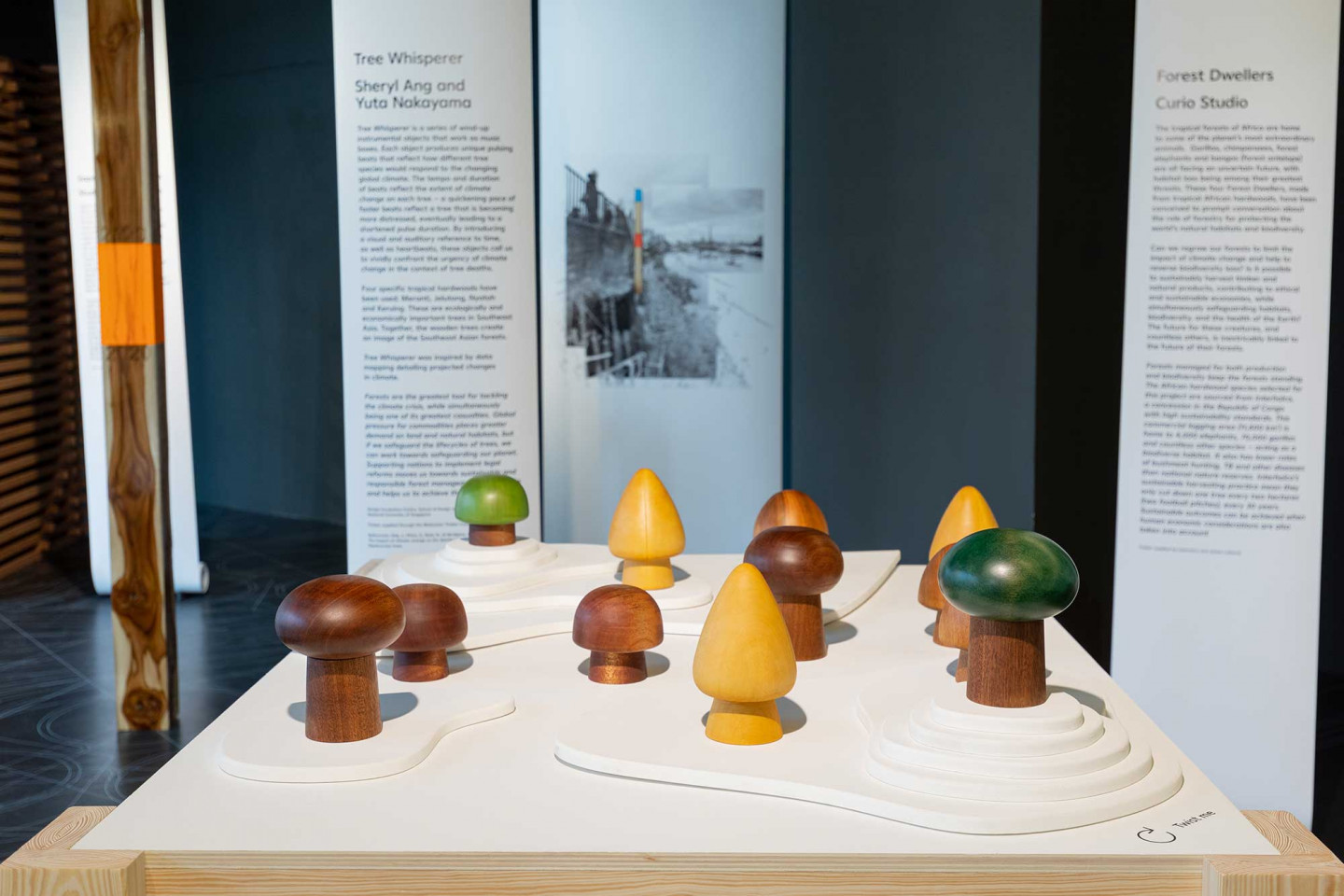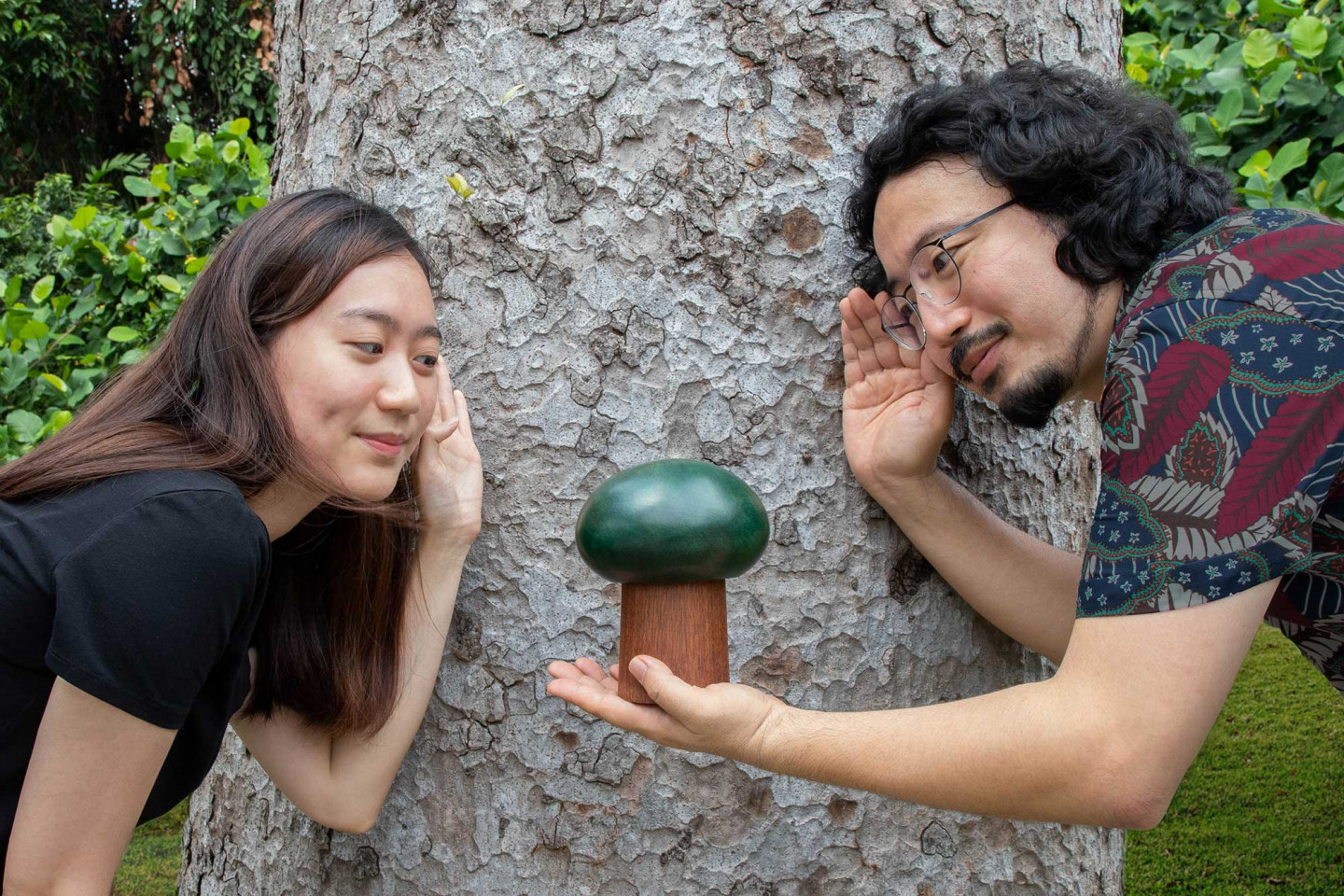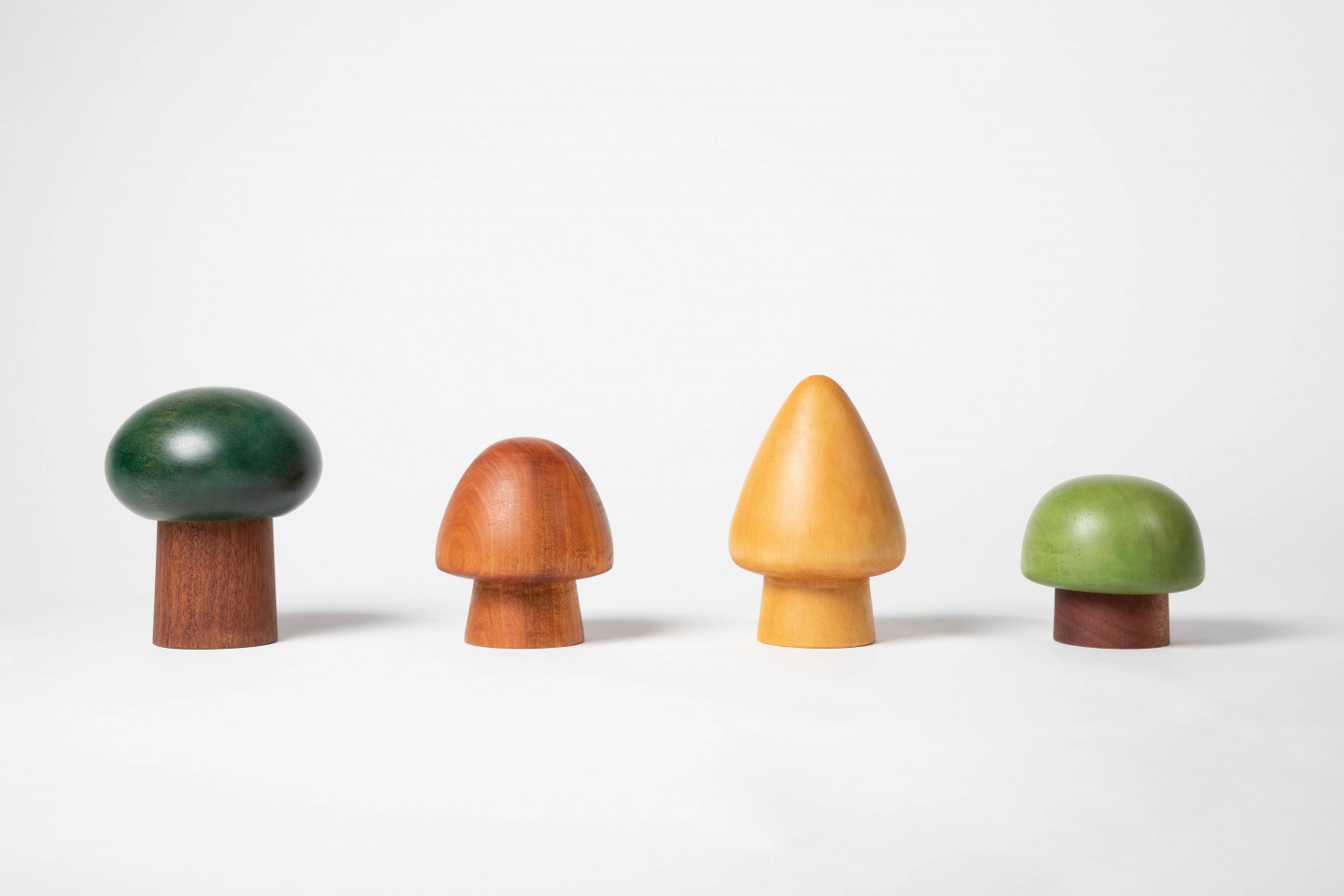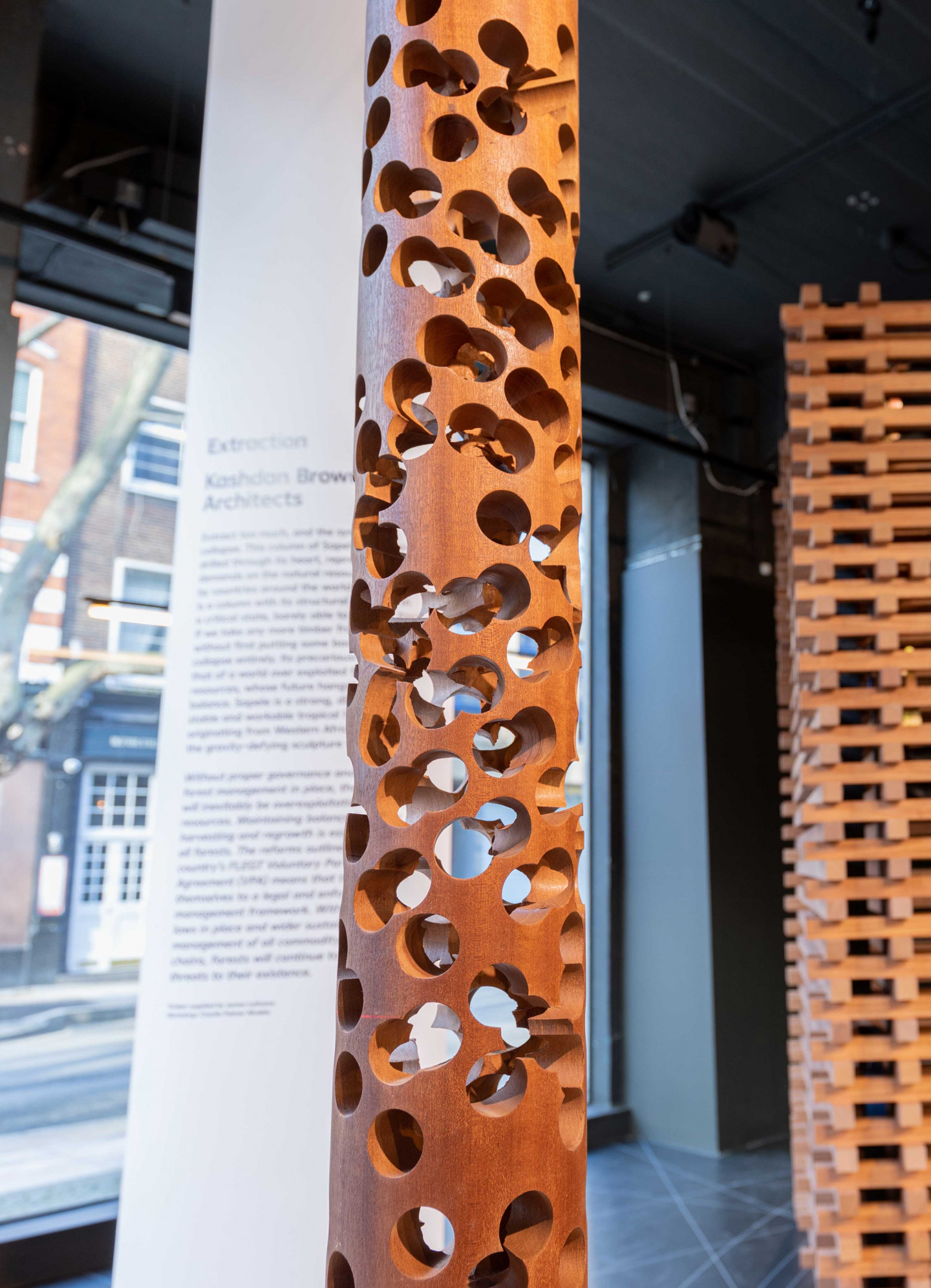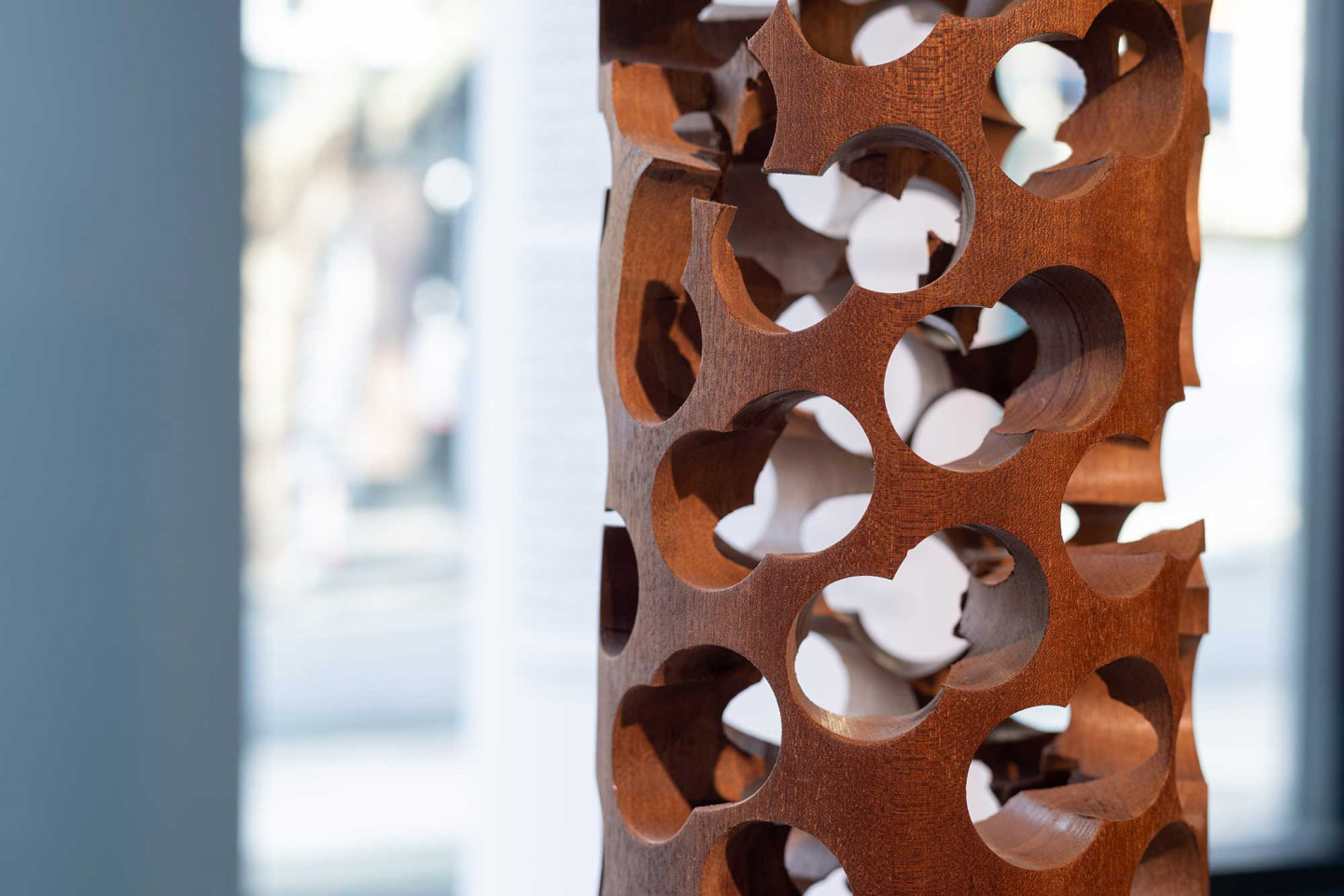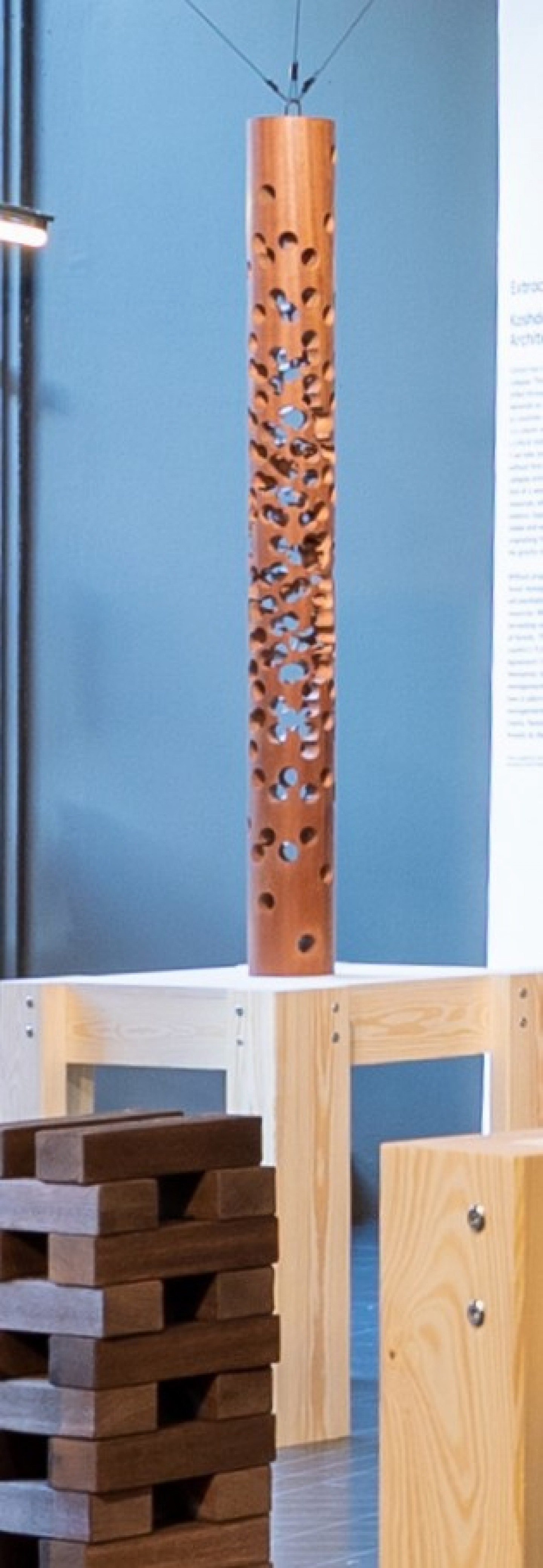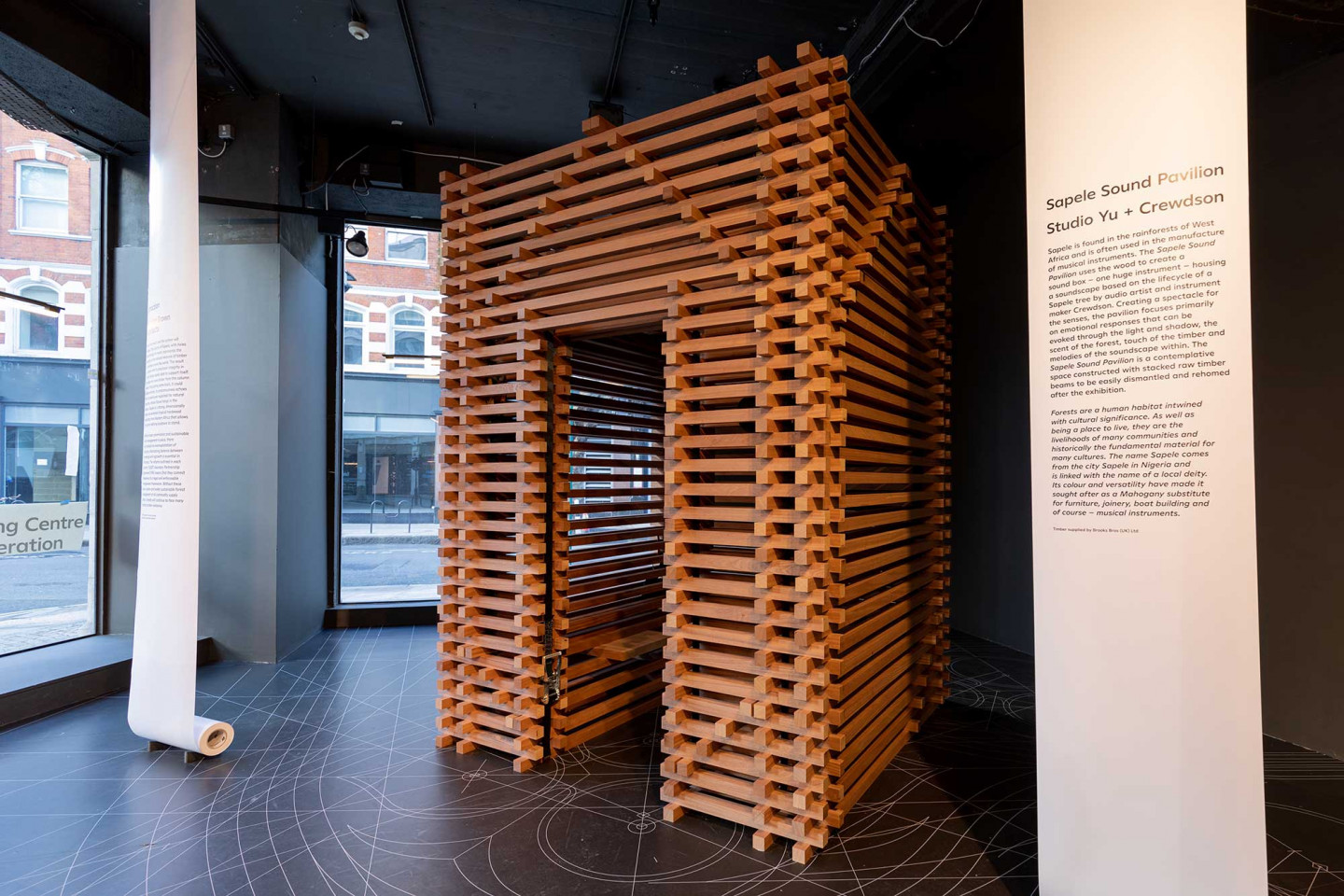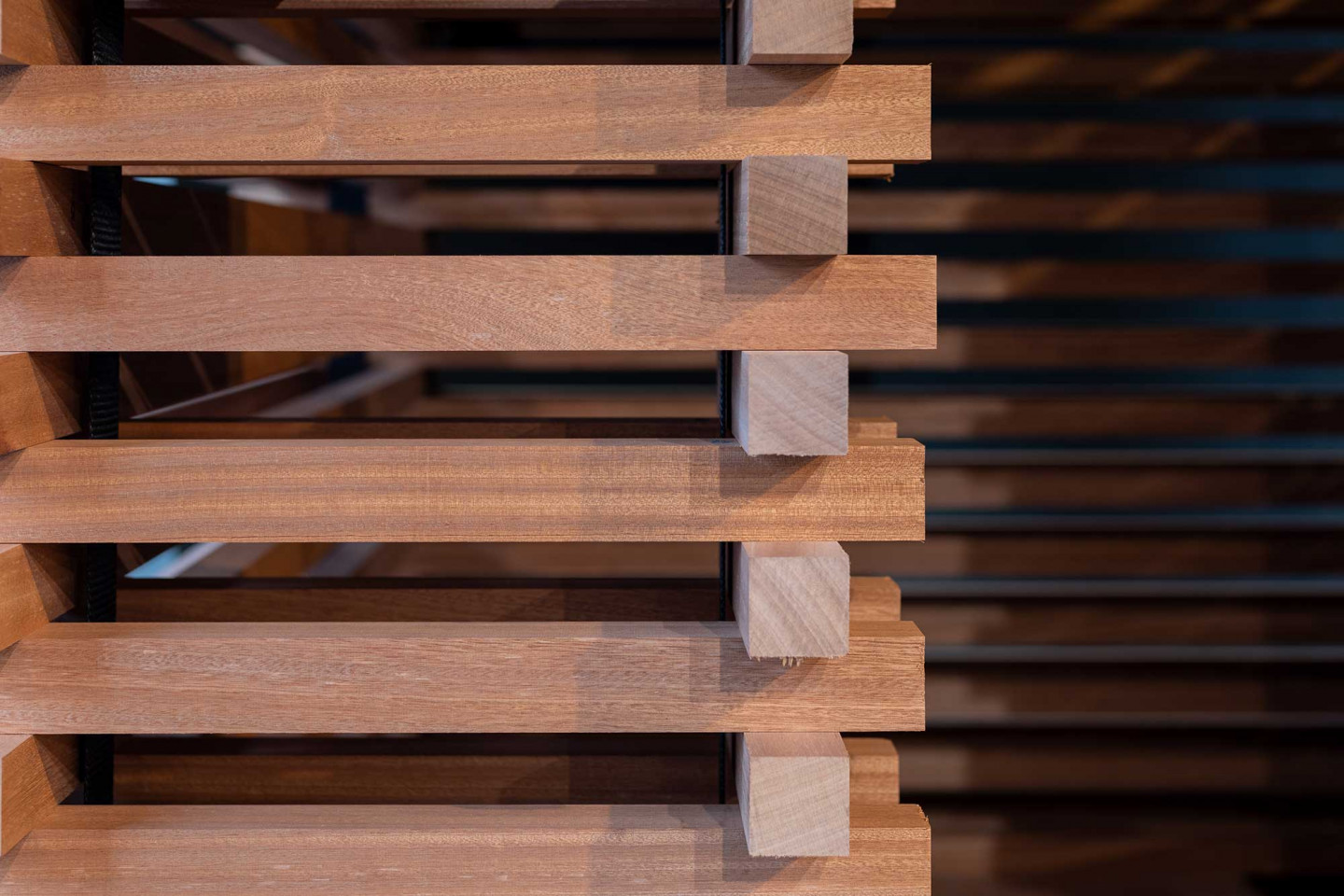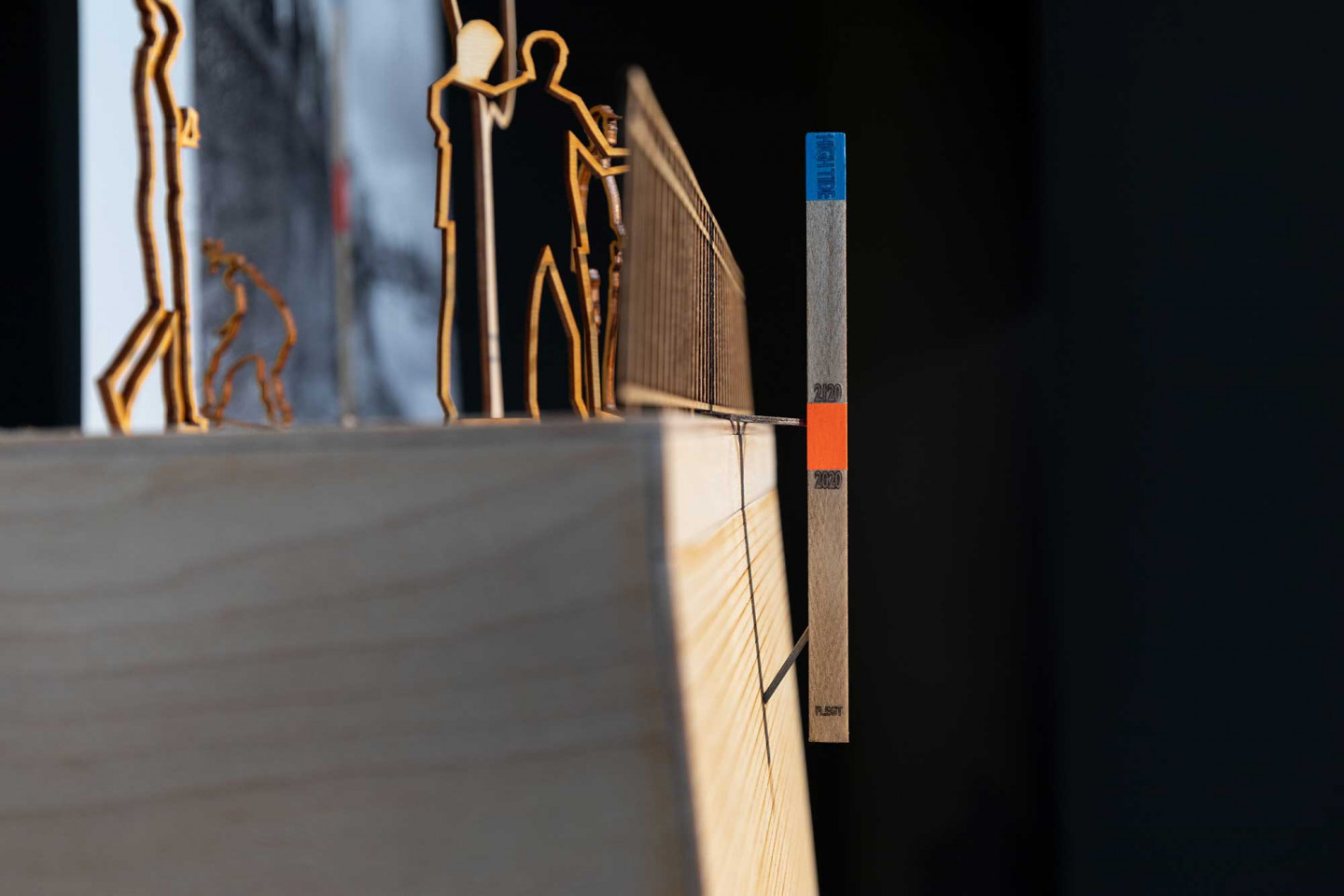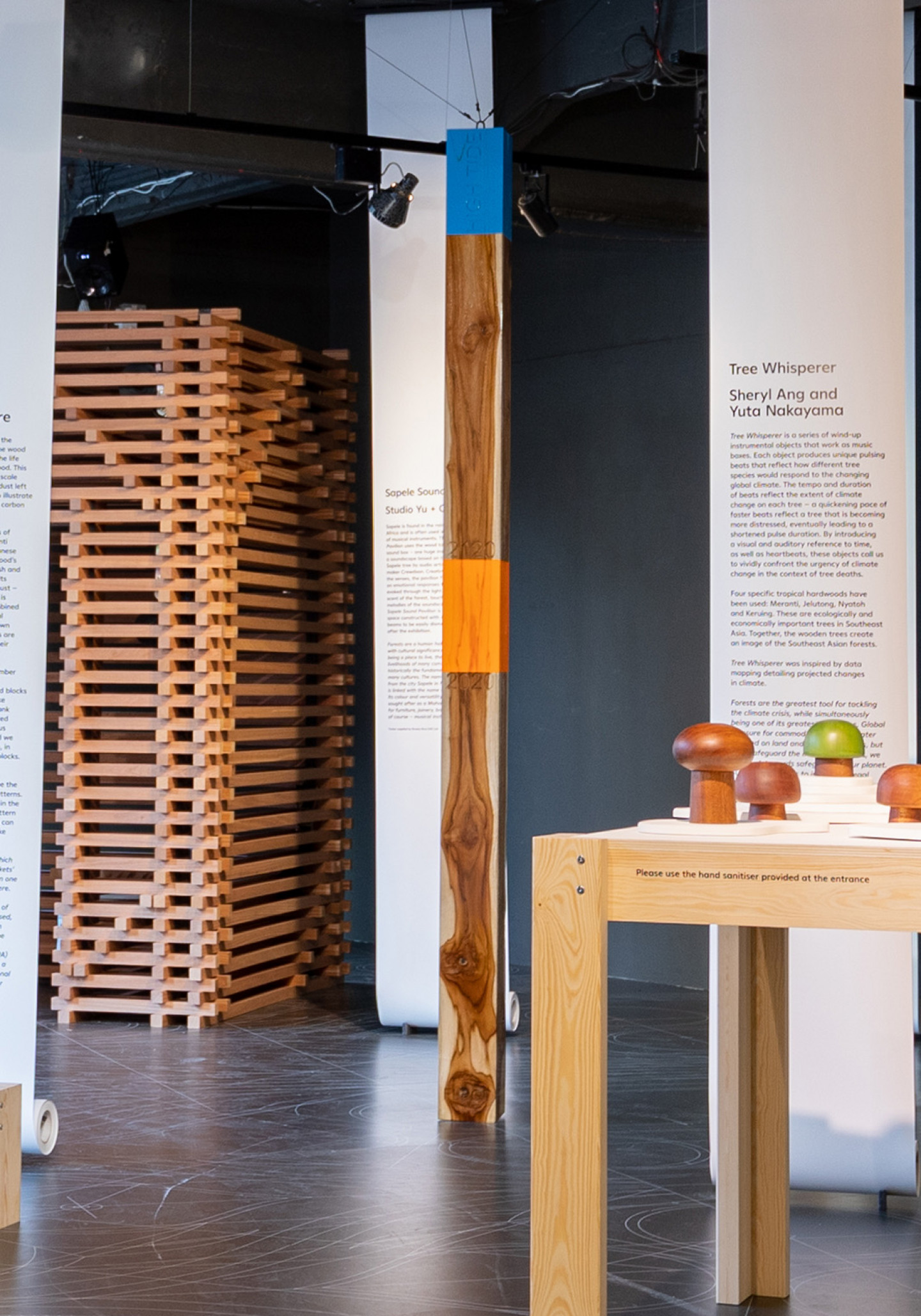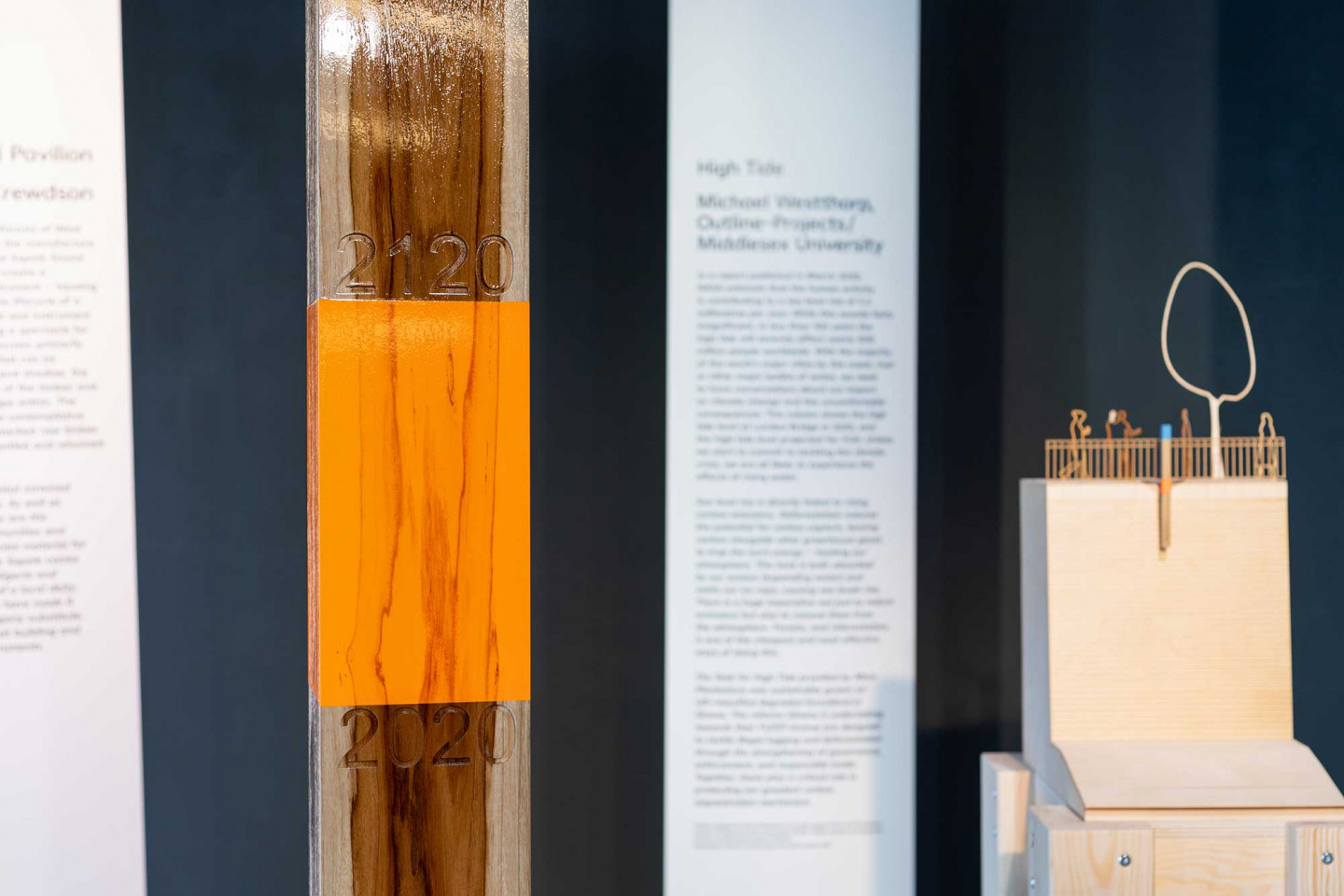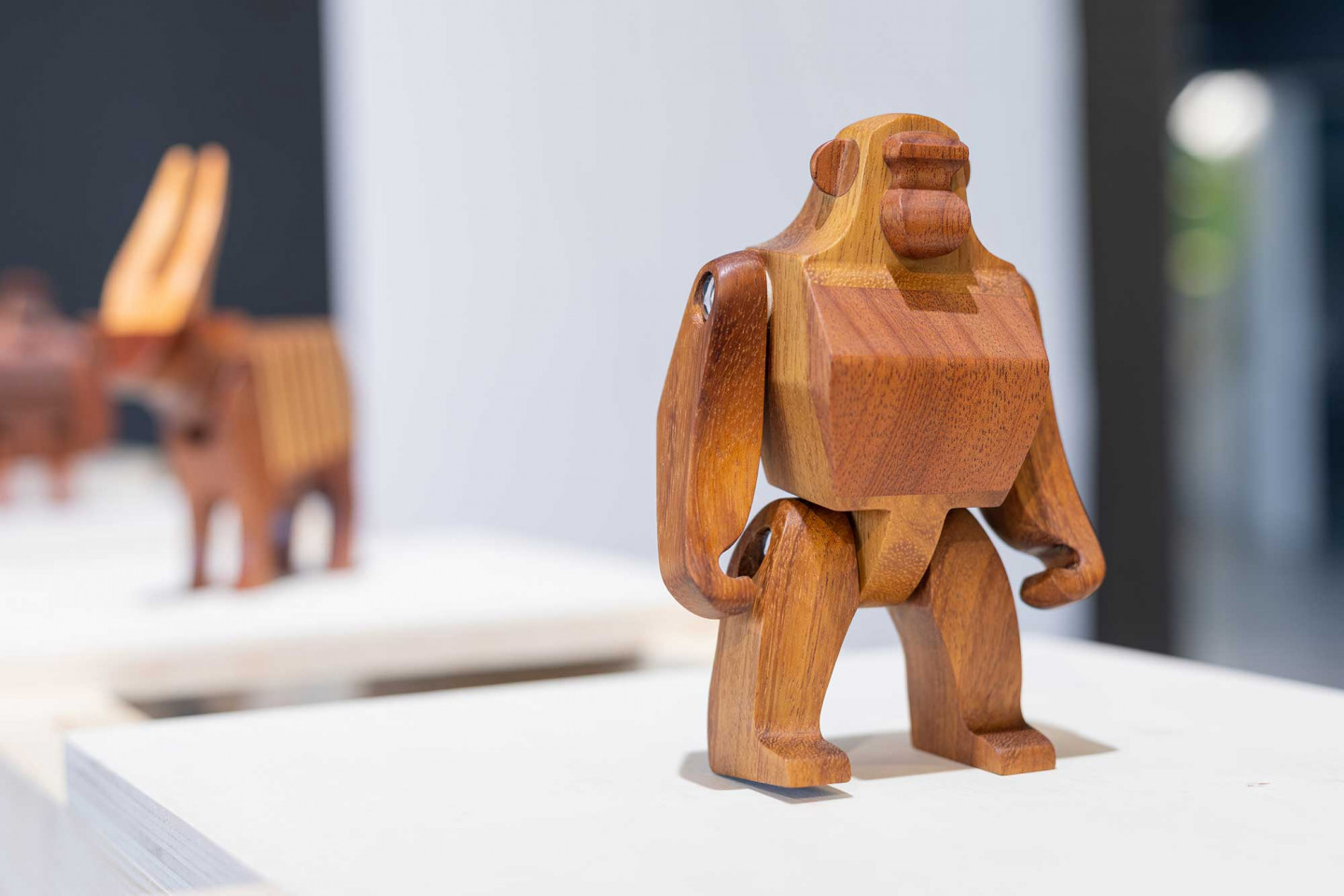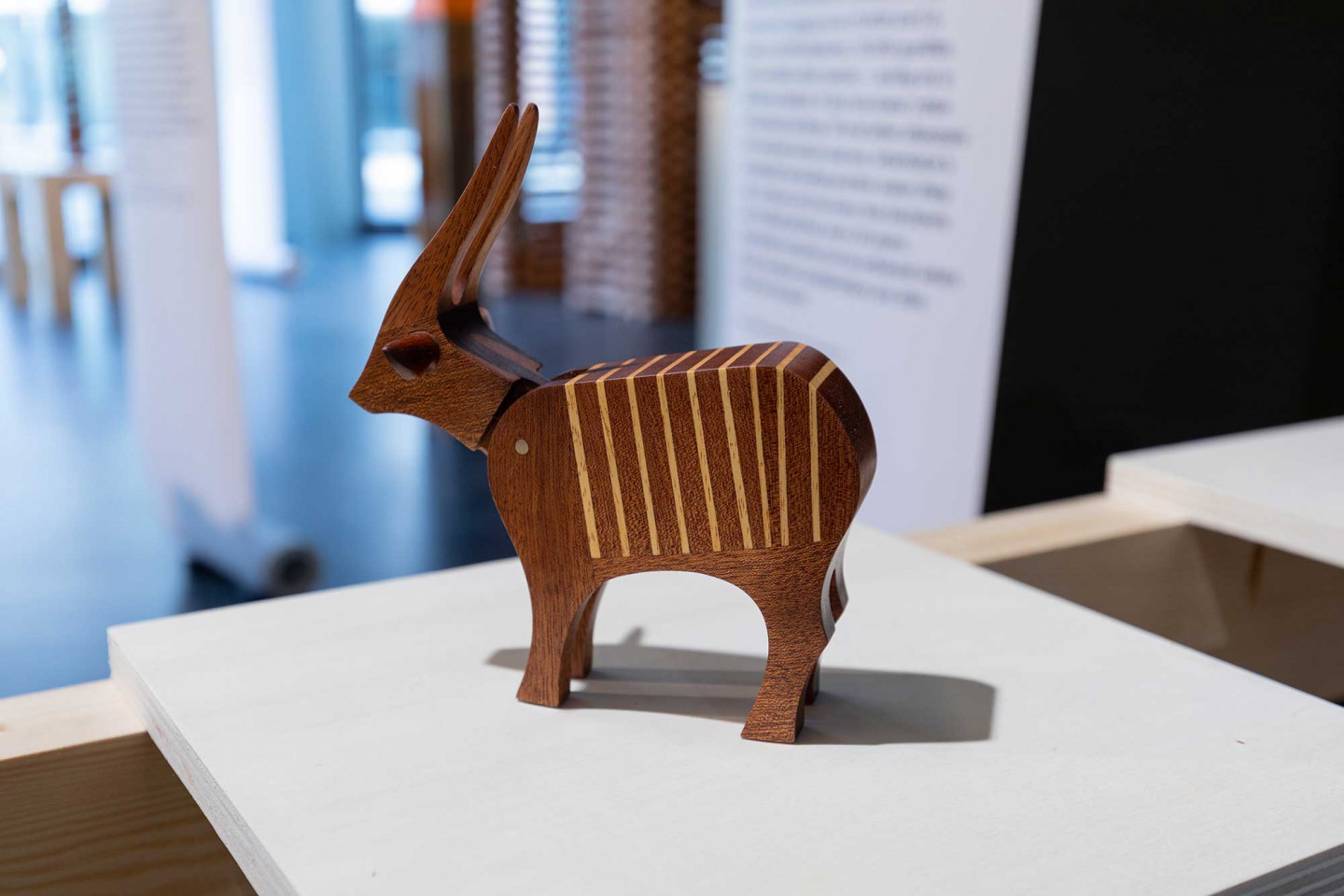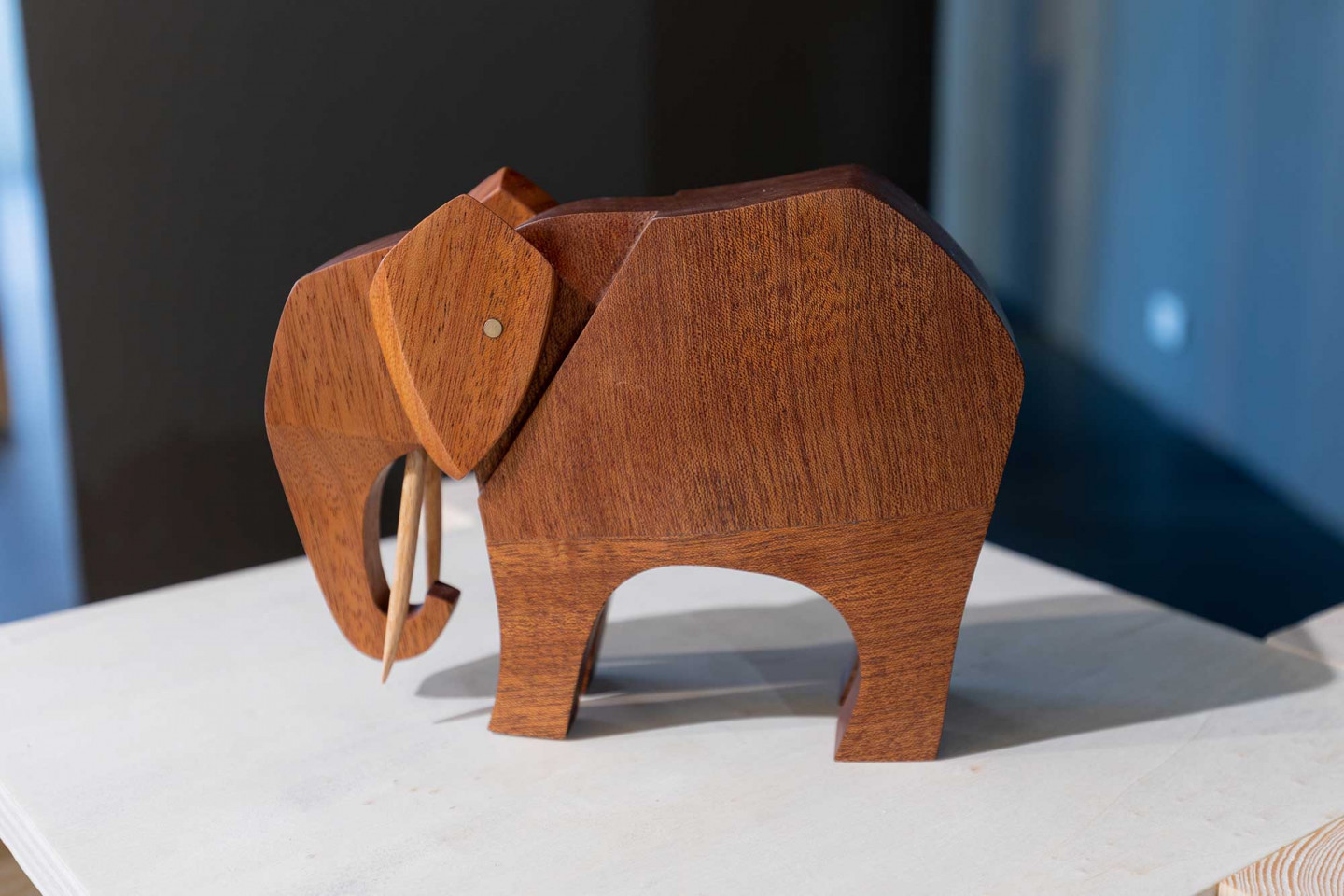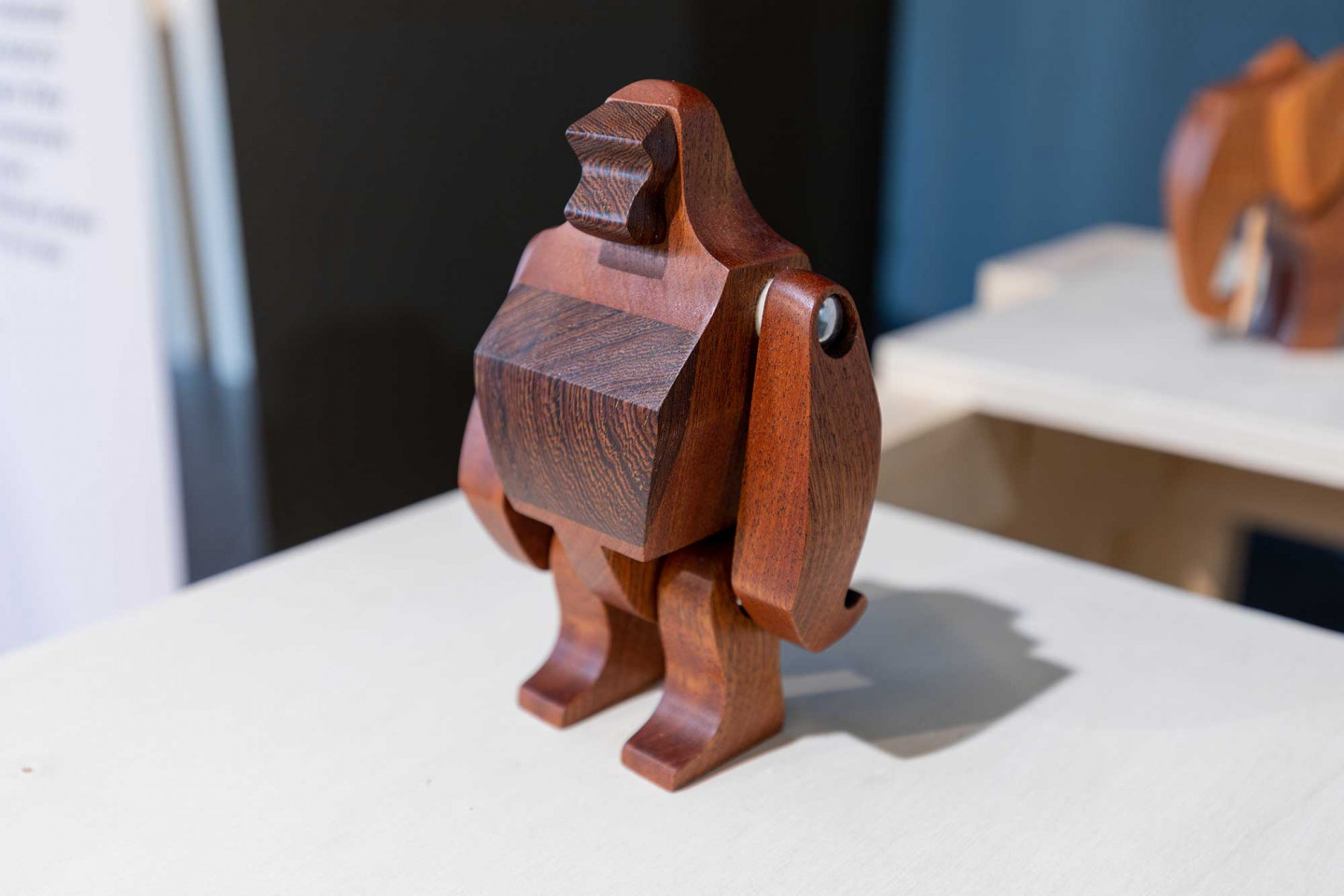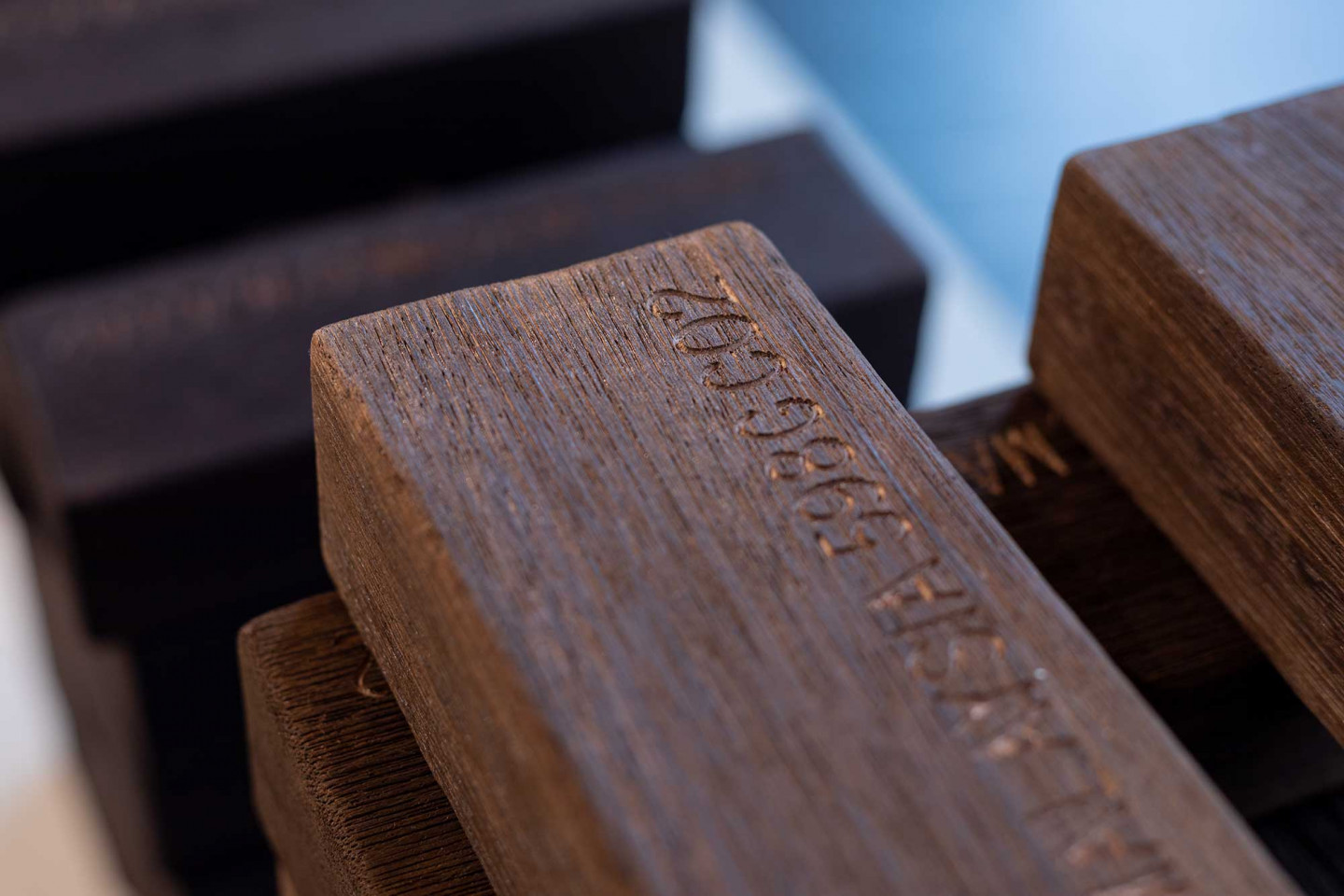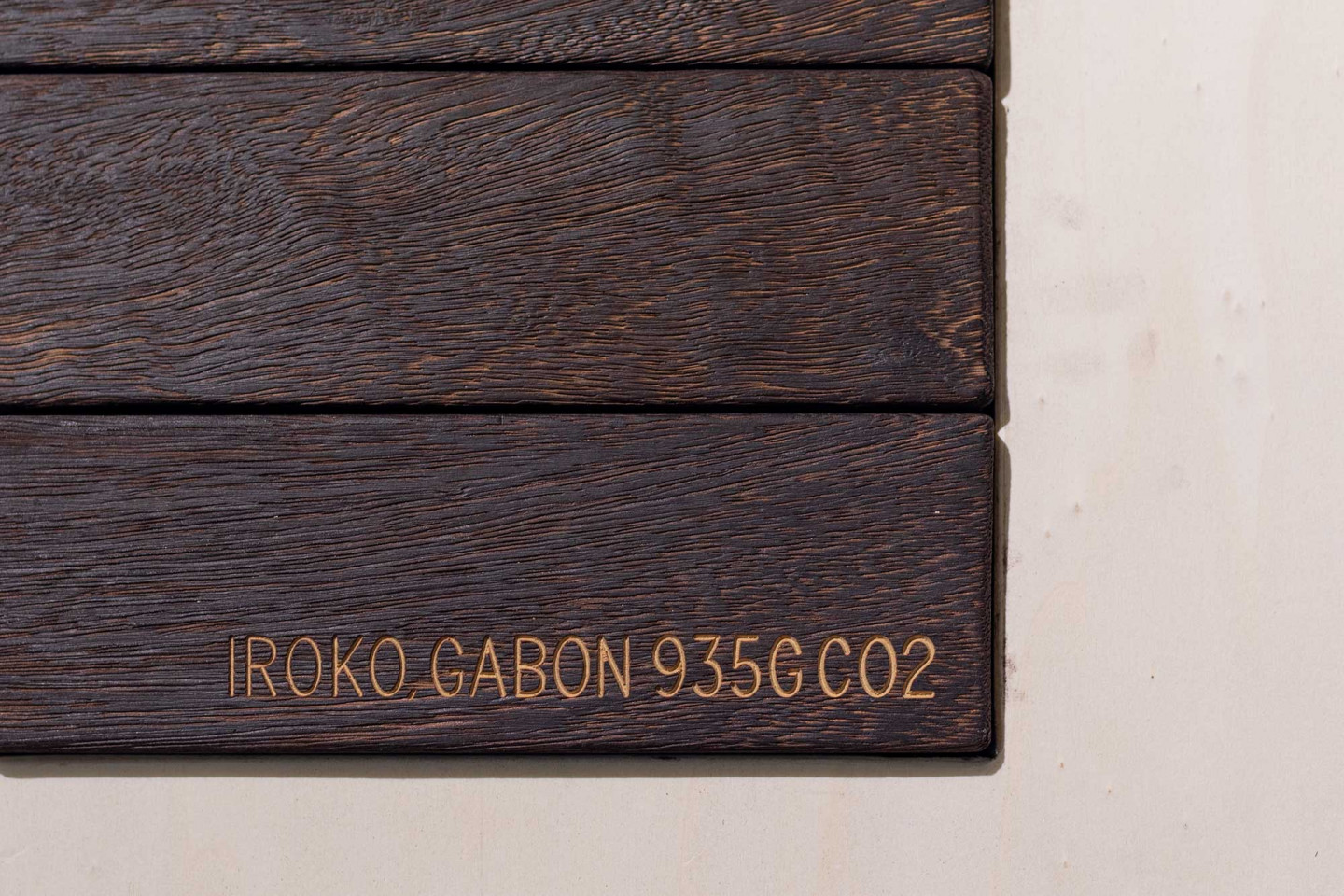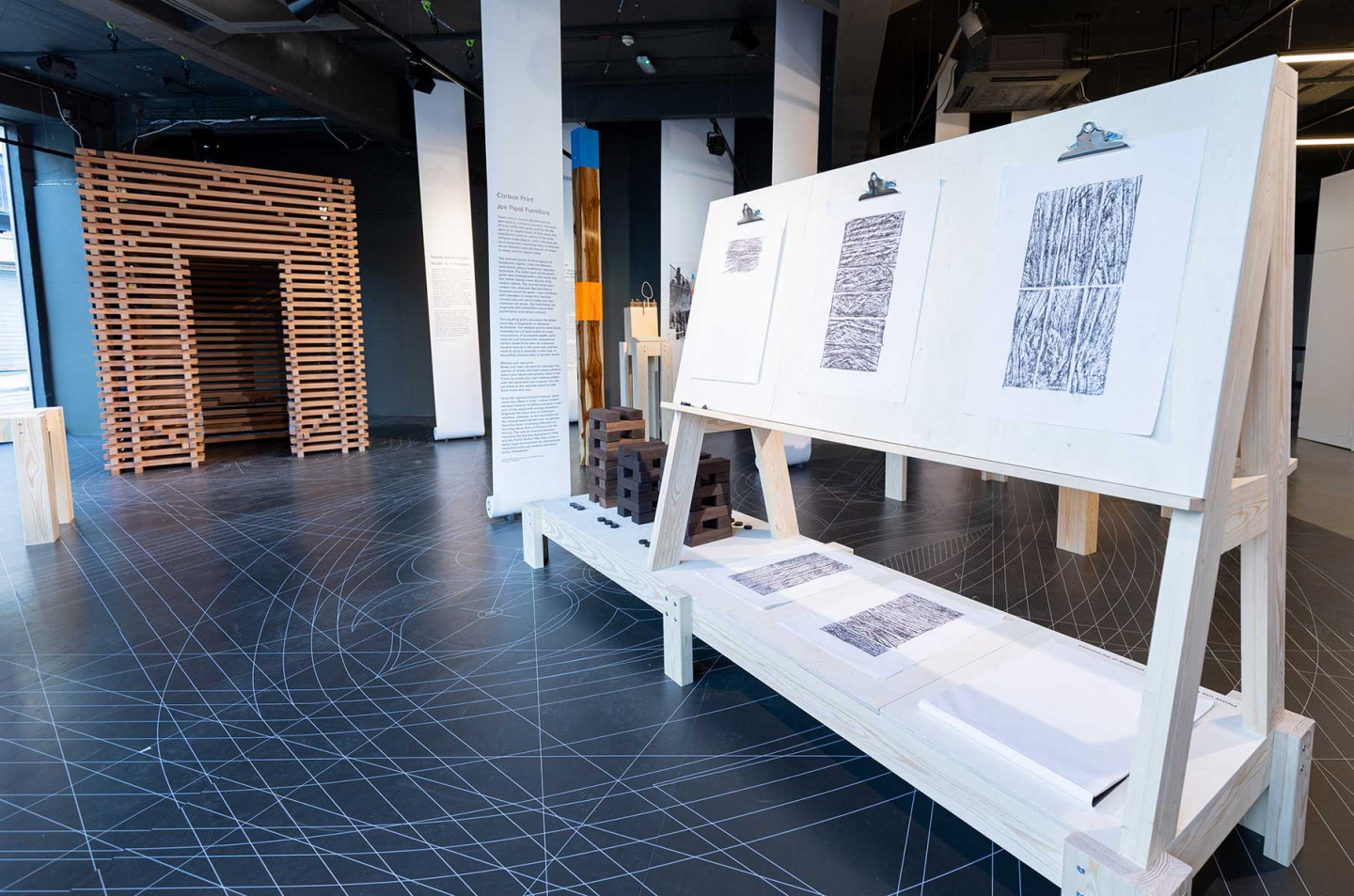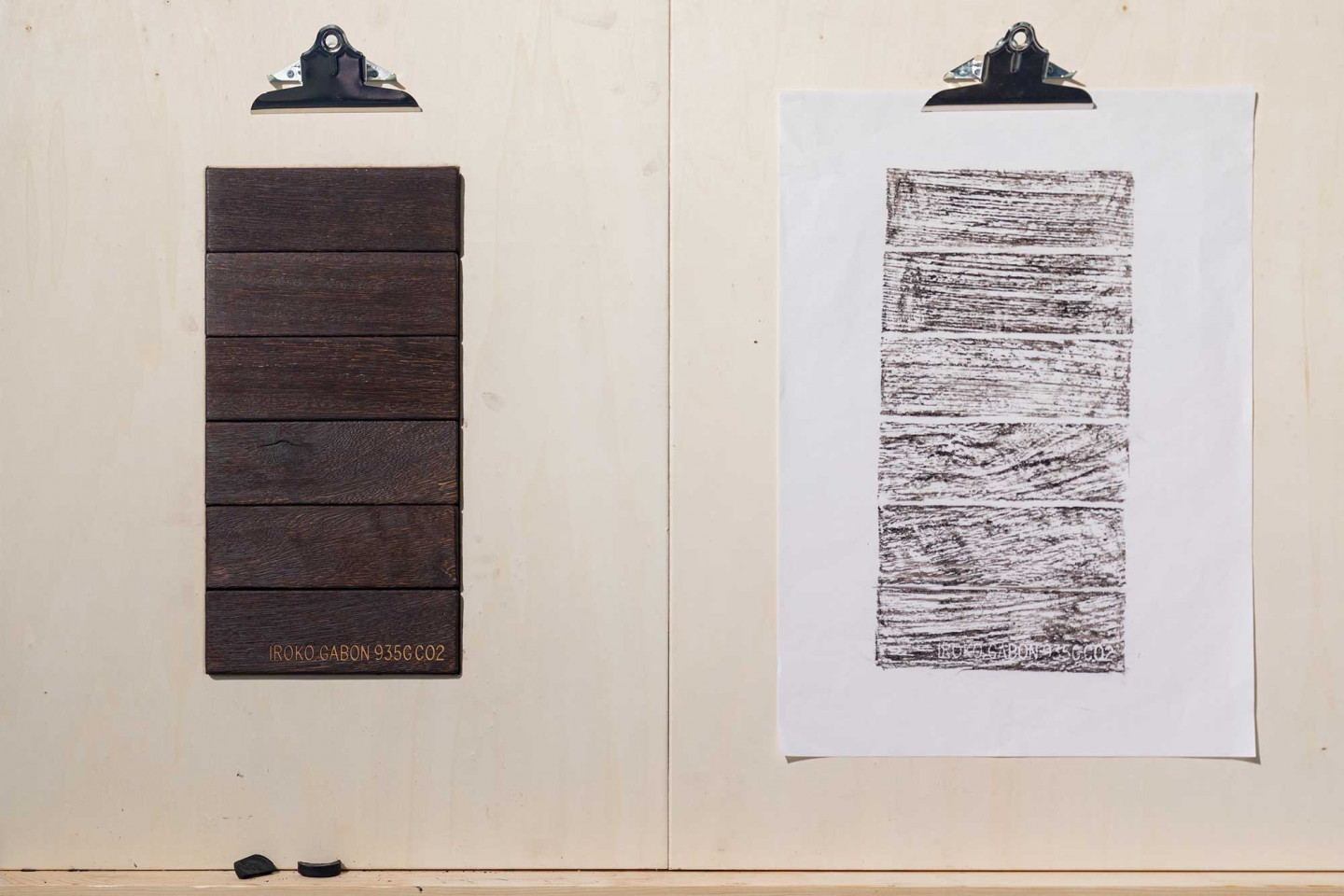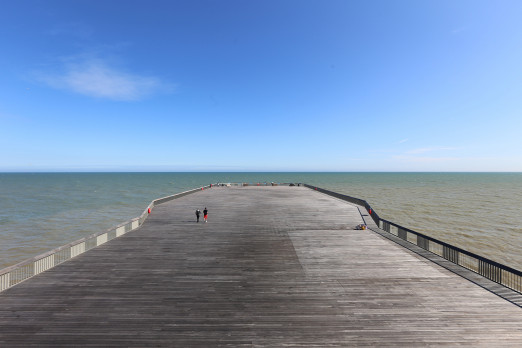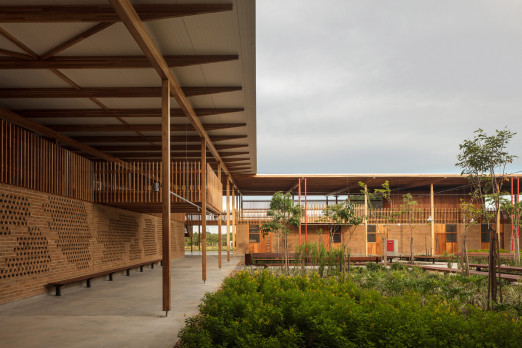Welcome to the online Conversations about Climate Change exhibition. Below you can find out more about each project and explore the installations in a 360° Virtual Exhibition Tour. You can also now visit the exhibition and see the objects in real life at the Building Centre.
For Full-Screen or Mobile Viewing, Click Here
Introduction
Conversations about Climate Change is a specially commissioned design competition, exhibition, and events series providing a platform for urgent climate debates. Led by the Timber Trade Federation in collaboration with the Building Centre, the exhibition showcases six installations made from responsibly sourced tropical timber celebrating the importance of this natural material.
The design competition asked designers to respond to tropical timber and encouraged them to think about the materials they usually work with, considering how their role as a specifier is vital for implementing change. We asked that designs stimulate a conversation about material provenance and its place in the climate debate while revealing the aesthetic qualities of the palette of tropical hardwoods species selected. The competition set the challenge for designers, architects and makers to create a piece of furniture, sculpture or functional object that sparks a conversation about climate change using FLEGT-licensed tropical timber.
Six winners were selected by a panel of expert judges; Adam Brinkworth of Brinkworth, Yinka Ilori of Yinka Ilori Studio, Julia Barfield of Marks Barfield, Andrew Waugh of Waugh Thistleton Architects, and Leah Riley Brown of the British Retail Consortium.
Tree Whisperer
Sheryl Ang and Yuta Nakayama
Tree Whisperer is a series of wind-up instrumental objects that work as music boxes. Each object produces unique pulsing beats that reflect how different tree species would respond to the changing global climate. The tempo and duration of beats reflect the extent of climate change on each tree – a quickening pace of faster beats reflect a tree that is becoming more distressed, eventually leading to a shortened pulse duration. By introducing a visual and auditory reference to time, as well as heartbeats, these objects call us to vividly confront the urgency of climate change in the context of tree deaths.
Four specific tropical hardwoods have been used: Meranti, Jelutong, Nyatoh and Keruing. These are ecologically and economically important trees in Southeast Asia. Together, the wooden trees create an image of the Southeast Asian forests.
Tree Whisperer was inspired by data mapping detailing projected changes in climate.
Design Incubation Centre, School of Design and Environment, National University of Singapore
Timber supplied through the Malaysian Timber Council
References: Deb, J., Phinn, S., Butt, N., & McAlpine, C. (2017, March 5). The impact of climate change on the distribution of two threatened Dipterocarp trees.
Extraction
Kashdan Brown Architects
Extract too much, and the system will collapse. This column of Sapele, with holes drilled through its heart, represents the demands on the natural resource of timber by countries around the world. The result is a column with its structural integrity in a critical state, barely able to support itself. If we take any more timber from this column without first putting some back, it could collapse entirely. Its precariousness echoes that of a world over exploited for natural resources, whose future hangs in the balance. Sapele is a strong, dimensionally stable and workable tropical hardwood originating from Western Africa that allows the gravity-defying sculpture to stand.
Timber supplied by James Lathams (FSC)
Workshop: Charlie Palmer Models
Sapele Sound Pavilion
Studio Yu + Crewdson
Sapele is found in the rainforests of West Africa and is often used in the manufacture of musical instruments. The Sapele Sound Pavilion uses the wood to create a sound box – one huge instrument – housing a soundscape based on the lifecycle of a Sapele tree by audio artist and instrument maker Crewdson. Creating a spectacle for the senses, the pavilion focuses primarily on emotional responses that can be evoked through the light and shadow, the scent of the forest, touch of the timber and melodies of the soundscape within. The Sapele Sound Pavilion is a contemplative space constructed with stacked raw timber beams to be easily dismantled and rehomed after the exhibition.
Timber supplied by Brooks Bros (UK) Ltd (FSC)
High Tide
Michael Westthorp, Outline-Projects / Middlesex University
In a report published in March 2020, NASA estimate that human activity is contributing to a sea level rise of 3.3 millimetres per year. While this sounds fairly insignificant, in less than 100 years the high tide will severely affect nearly 600 million people worldwide. With the majority of the world’s major cities by the coast, river or other major bodies of water, we need to have conversations about our impact on climate change and the uncomfortable consequences. This column shows the high tide level at London Bridge in 2020, and the high tide level projected for 2120. Unless we start to commit to tackling the climate crisis, we are all likely to experience the effects of rising water.
Timber supplied by Mere Plantations Ltd, with support from the Plantations Division of Ghana Forestry Commission (GFC), Timber Industry Development Division and the Government of Ghana.
Workshop: Criteria Contracting and South London CNC
Forest Dwellers
Curio Studio
The tropical forests of Africa are home to some of the planet’s most extraordinary animals. Gorillas, chimpanzees, forest elephants and bongos (forest antelope) are all facing an uncertain future, with habitat loss being among their greatest threats. These four Forest Dwellers, made from tropical African hardwoods, have been conceived to prompt conversation about the role of forestry for protecting the world’s natural habitats and biodiversity.
Can we regrow our forests to limit the impact of climate change and help to reverse biodiversity loss? Is it possible to sustainably harvest timber and natural products, contributing to ethical and sustainable economies, while simultaneously safeguarding habitats, biodiversity, and the health of the Earth? The future for these creatures, and countless others, is inextricably linked to the future of their forests.
Timber supplied by Interholco/Danzer UK and James Lathams (FSC)
Carbon Print
Joe Pipal Furniture
Trees remove carbon dioxide from the atmosphere. Carbon is stored in the wood of trees while they grow, and for the life span of an object made of that wood. This installation looks at carbon at the scale of hand-made objects, and in the dust left on a carpenter’s workshop floor, to illustrate on an intimate scale the beauty of carbon in wood, and its capital value.
The charred blocks of three species of hardwood; Sapele, Iroko and Meranti were burnt using a traditional Japanese technique. The softer part of the wood’s grain was removed with a wire brush and the timber speaks more directly of its carbon nature. The charred wood dust – carbon rich, charcoal-like soot that is brushed out of the grain – was combined with beeswax to create the charcoal crayons you can use to make your own charcoal rub-prints. The fired blocks are engraved with information about their provenance and carbon content.
The resulting prints document the timber much like a fingerprint or botanical illustration. The stacked and branded blocks resemble bars of gold bullion to evoke associations of stockpiled wealth, bank reserves and investments. Sequestered carbon needs to be seen as a precious mineral reserve in the same way, and we need to store it carefully; in this case, in beautifully stacked piles of wooden blocks.
Timber supplied by Arnold Laver and Morgan Timber (FSC & PEFC)
Workshop: madeCNC
With thanks to our competition judges; Julia Barfield, Adam Brinkworth, Yinka Ilori, Leah Riley Brown and Andrew Waugh.
#ClimateConversations
Conversations about Climate Change is a partnership between the Building Centre and the Timber Trade Federation.
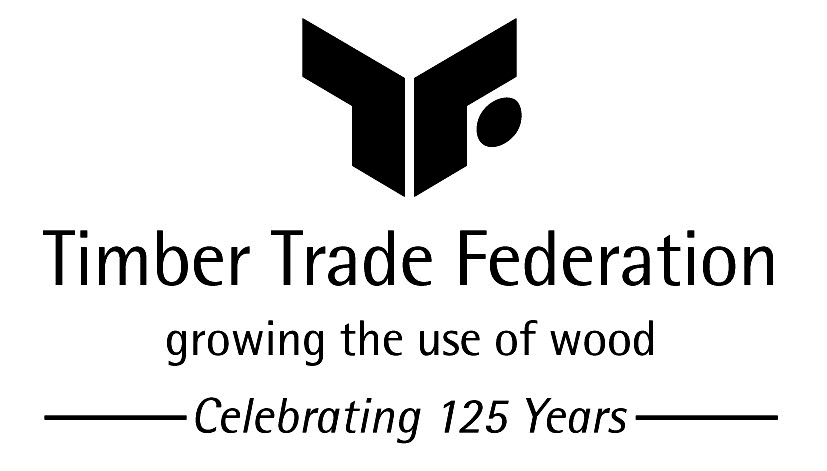
Sponsored by the Foreign, Commonwealth & Development Office and the Built Environment Trust.


Supported by James Latham, Mere Plantations, Arnold Laver, Interholco/Danzer UK, Brooks Bros, Morgan Timber, and the Malaysian Timber Council.
Timber for this project has been sourced through Timber Trade Federation members, in line with the TTF’s Responsible Purchasing Policy – a risk management framework for the continuous improvement of TTF Members’ awareness of obligations under the EU Timber Regulation / UK Timber Regulation (EUTR/ UKTR, the Constructions Product Regulation (CPR) and TTF Code of Conducts.
Exhibition design by Install Archive. Graphic design by Daly & Lyon.

